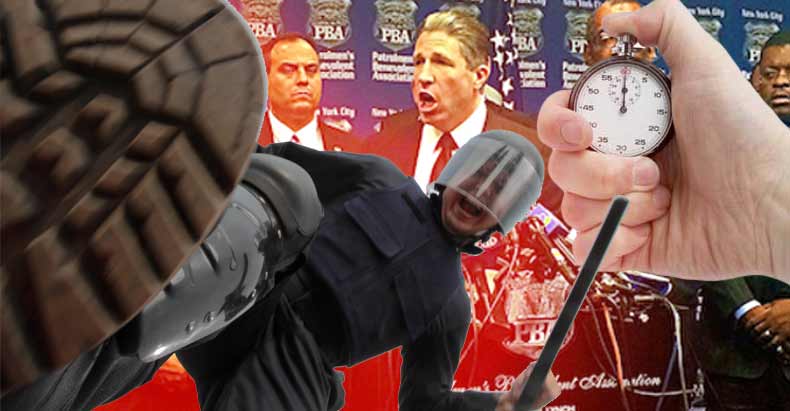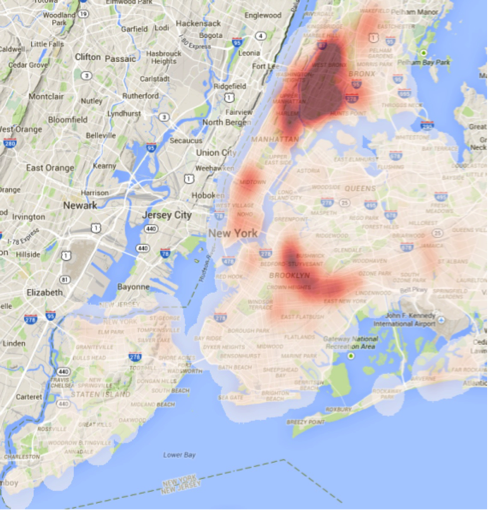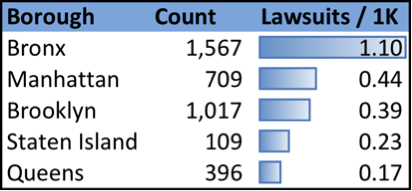Isolated Incidents? A Lawsuit is Filed Against the NYPD Every 2 1/2 Hours
By Matt Agorist | The Free Though Project
If these staggering numbers show us anything, it’s that the time for discussing solutions is well overdue.
New York, NY — New York City comptroller, Scott Stringer, recently released a map of all lawsuits filed against the NYPD in 2013. This graphic representation of police misconduct was then analyzed and compiled into a compelling report which illustrates the dire need of reform.
The report put out by the comptroller’s officer, titled Claimstat, shows that the lawsuits are derived “primarily of allegations of police misconduct, civil rights violations, and injury and/or damage from accidents involving police vehicles.” The report was put out in July and is used as a way of using data-driven methods to try and save money.
However, it doesn’t look like counting the incidents of police brutality is doing anything to save the city money, as Stringer’s original report said that the 2015 budget would have to include $674 million for settlements and judgments (an amount greater that the budget for the Parks Department, Department of Aging and New York Public Library combined).
The move to release this data was done in an effort to apply more transparency to the NYPD. However, as quantitative analyst Ben Wellington points out, the comptroller gave us only a map and failed to release the underlying data in regards to these lawsuits.
Wellington, who runs the NYC data blog I Quant NY, then unlocked the data contained in the Claimstat report and organized it by location, to give us a better understanding.
I started by creating a heat map, showing how the 3,800 police lawsuits were distributed in 2013:
While these lawsuits were present throughout the five boroughs, the map shows that they were anything but evenly distributed.
The largest hotspot in the map is clearly in the Bronx, but there are others. A look at the number of lawsuits filed per one-thousand residents in each borough also shows that Bronx residents were more than two times as likely to file a suit than residents from Brooklyn and more than six times more likely than residents of Staten Island:
I Quant NY also took a look at Eric Garner’s neighborhood, finding that there were 109 lawsuits that originated in Staten Island and three within a two block radius of Garner’s home, marked by the red star on the map below.
I Quant NY also took a look at Eric Garner’s neighborhood, finding that there were 109 lawsuits that originated in Staten Island and three within a two block radius of Garner’s home, marked by the red star on the map below.
3,800 lawsuits may not seem like that large of a number, but we must take into account that these are actual lawsuits from people who are able to find an attorney to represent them. Many times over, victims of police misconduct are unable to secure council for the simple fact that it is their word against the officers.
As the Free Thought Project reported, there are literally tens of thousands of complaints filed against the NYPD every year and this number is on the rise.
If these staggering numbers show us anything, it’s that the time for discussing solutions is well overdue.
A sure fire way to force police accountability would be to have officers carry their own personal liability insurance. Every time a victim of police brutality is awarded monetary damages, it is the innocent tax payers who are held responsible, not the individual police officer.
If the individual’s job was directly effected by the quality of their service, you could rest assured that excessive force claims would plummet as this would effectively get rid of problem officers who would have to either stop being a problem, or become uninsurable, thereby becoming unemployable.
The dilemma of police brutality however, does not arise from a lack of solutions, but from a lack listening, by those with the “authority” to implement them.
Nonetheless, if enough of us, even a small and irate minority, keep pushing these ideas to the forefront, we can and will rein in the police state.




